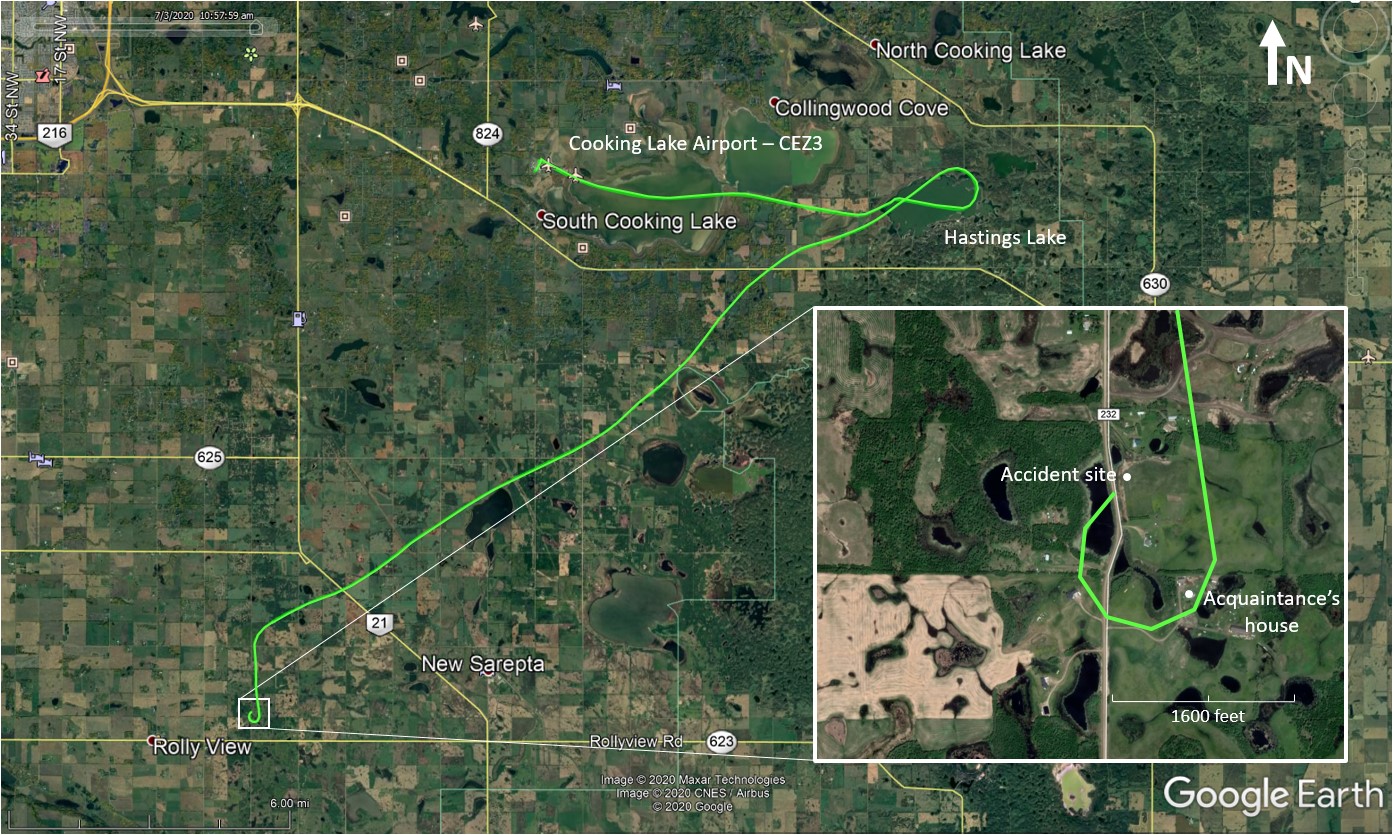
A low-level stall/spin preceded the fatal crash of a Murphy Moose on floats in central Alberta last summer. The pilot, a training pilot and a passenger were all killed when the big homebuilt single crashed in a field in Rolly View, about 16 km east of Leduc. The training pilot was pilot in command but it’s not clear who was flying when the crash occurred. The TSB report says the purpose of the flight was to train the owner of the plane on amphibious floats. The owner had 209 hours, about half of them on the crash airplane but on wheels. The floats were installed about a month before the crash.
The plane took off from Cooking Lake about 10:40 a.m. and the plan was to land and take off from a couple of other lakes in the area. After landing on Hastings Lake, the aircraft headed southeast at about 500 feet AGL to the home of an acquaintance of the training pilot. The aircraft entered a steep right turn (43 degrees of bank angle) at about 300 AGL and as it climbed 100 feet in the turn airspeed bled off to 93 mph. It entered an accelerated stall and spun almost vertically into a field next to a road. At that angle of bank, the aircraft on wheels should have stalled at about 75 mph but there is no published data on the stall speeds with floats. The TSB also noted that at steep bank angles a stall can be caused by abrupt control inputs but said it was unable to determine the precise bank angle, pitch, and speed when control was lost.
